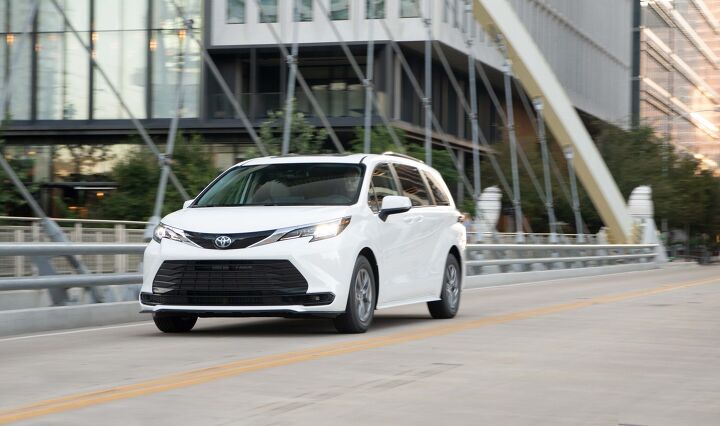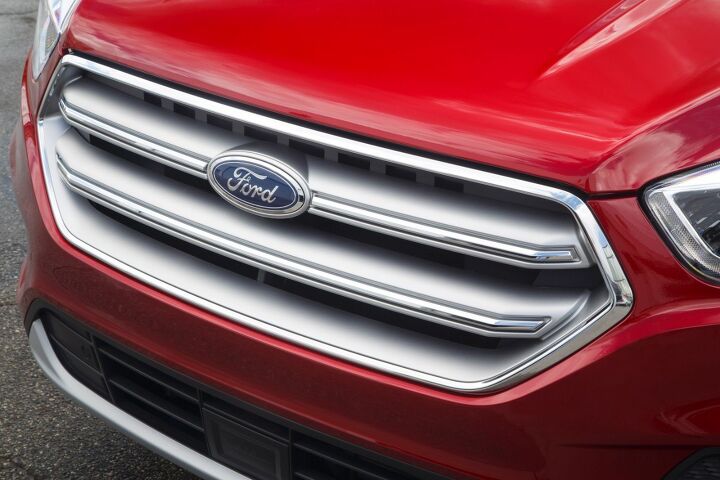#ConsumerTrends
Could Minivans Become Popular Again?
While often derided as highly unfashionable, minivans really are the Swiss Army knife of vehicles. They’re people haulers, cargo carriers, mobile campsites, and can even improvise as work vehicles for when a utility van (the Leatherman of vehicles) is unavailable. Minivans also drive more like cars than the brutes occupying the SUV and pickup segment, making them easier for some drivers to live with.
With vans having enjoyed a cultural renaissance during the 1970s, minivans hit the ground running in the mid-1980s and continued to swell in popularity until the millennium. By then, North Americans were buying an estimated 1.5 million minivans a year. But that’s also where society decided to apply the brakes. Sport utility vehicles and crossovers have effectively supplanted the van as the default family conveyance — though recent sales figures have suggested those dying flames are now being rekindled.
IRS Rolls Back Standard Mileage Rates for 2021
The IRS has issued the 2021 standard mileage rates used to calculate the deductible costs of operating an automobile for business, charitable, medical, or moving purposes.
Minivan Market Share Plunged During America's Pandemic-induced Second-quarter Auto Sales Collapse
“How bad is it? And how bad is it going to be?”
Those were our questions five months ago when describing the American minivan category’s paltry 408,982 sales in calendar year 2019. At that time, the rate of decline experienced by the segment suggested that, “America won’t even acquire 300,000 minivans next year.”
Enter novel coronavirus and, consequently, a second-quarter in which auto sales in the United States tumbled by a third. For perspective, that’s 1.5 million fewer sales between April and June of 2020 than during the equivalent period one year earlier.
Meanwhile, as quarantines and lockdowns and isolations and shutdowns caused new vehicle demand to shrink, the previously beloved minivan segment saw its share of the U.S. market absolutely crater.
Why Are Teens Growing Disinterested in Automobiles?
When I was an adolescent, it was made clear to me that the first step toward adulthood was getting my driver’s license. Even without an automobile, it provided unimaginable freedoms and brought me closer to my goal of doing a burnout in the high school parking lot. That dream was ultimately achieved, leaving me to rethink roadway safety as my first car was loaded onto a flatbed while the scent of tire smoke and bleach clung to my clothing.
Fortunately, hitching a ride home was easy, as most of my friends had also acquired licenses and cars of their own. But that’s probably not going to be the case for teens coming of driving age in these modern times.
According to the Federal Highway Administration, the percentage of American teenagers bothering to get their licenses has effectively plateaued at a low point. Nearly 48 percent of 16-year-olds in this country could legally drive in 1984; that number settled to just 25.6 percent in 2018. The reasons are more complicated than just the younger generation’s snubbing of the automobile.
Report: Abandoning Small Car Segment Could Be a Big Mistake
A new report from Edmunds tries to make a case against Ford and General Motors placing their small- and medium-sized cars on an iceberg and setting it adrift. We don’t even need to see the metrics to agree. Ditching cars for higher-margin crossovers and SUVs always seemed a little short-sighted. Without entry-level models, you’re likely to get fewer entry-level (i.e. new) customers, and several of the models axed from North American lineups happened to be the most enjoyable to drive.
Selfishly, we like to see plenty of variety among mainstream brands.
Edmunds’ concern isn’t so much about Ford and GM losing money; rather, it’s more about the automakers setting themselves up for failure further down the line. The analysis revealed that 42 percent of Cruze and Focus owners are choosing to stay in the passenger car segment, rather than spending a little (or lot) more to purchase crossovers and SUVs. Meanwhile, 23 percent of Cruze owners and 31 percent of Focus owners who traded in their car in 2019 ended up buying something similar from a competing automaker.
Why American Muscle Might Outlive the Standard American Sedan
Domestic sedans are currently being walked up to the edge of a mass grave. Beneath them rests their two-doored brethren and the first wave of four-doors previously executed by the Big Three. Ford has promised a lineup comprised almost entirely of pickups and utility vehicles in the coming years and General Motors is in the process of doing the same. Fiat Chrysler wisely kept its automotive killing spree under the radar by being the first to pull the trigger and not making a big deal of it. But consider what’s left within its domestic nameplates: SUVs, pickups, a few vans and the endangered Chrysler 300 — which is really a more of a commoner’s luxury vehicle.
FCA also has the Dodge Charger and Challenger in its stable, but they’re not what one might consider when imagining your typical sedan. They’re ancient, powerful creatures. Gas-guzzling muscle cars, brimming with attitude, and seemingly impervious to harm. Goliaths without a David or fuel crisis to put them down. Who could have ever imagined that American muscle would crawl back out of its grave after such a long absence and manage to outlive the typical sedan?
Their manufacturer, for one.
All Things Being Equal: The Changing Face of Luxury
There’s a growing assumption that automobiles have become so universally satisfactory, there’s nothing to gripe about anymore. We’re inclined to disagree. There will always be models that fail to meet our expectations and industry trends we’re not particularly fond of. However, we will happily acknowledge that low-tier automobiles have become decidedly less terrible when thrown together into a pool.
A weird side effect of this has been mainstream brands moving upmarket and offering a bevy of luxury options while extravagant nameplates do the inverse. For example, the Kia Cadenza can easily be outfitted to surpass the base Cadillac ATS in terms of luxury features and overall price. It doesn’t have the prestige, but you’re still buying a larger automobile with a focus on lavishness that can deliver on an exceptionally quiet and comfortable ride.
On the flip side of things, Cadillac is busy prepping its new small crossover for the general market. Priced for a mainstream budget, the XT4 should be a win for General Motors. But it further showcases the amount of overlap happening within the industry right now. Value manufacturers are becoming increasingly willing to move upmarket while luxury brands are trying to burn the money candle at both ends.
Ford Continues Fighting for Europe
Ford Motor Company has a lot invested in Europe. While the continent spent decades operating facilities under the lose leadership of Ford of Britain, Detroit acquired direct ownership in 1950. From there it extended its influence dramatically, buying up established European manufacturers near the close of the 20th century. But things haven’t always been good; economic hardships have been par for the course and things haven’t been easy in a long time.
Presently, Ford makes around $75,000 in profit for each of its employees in the United States. In Europe, that number is about $4,300 per worker. While we’re sure that makes domestic line workers feel entitled to a small pay increase, the point is that the profit margins across the pond are pretty slim for Ford.
However, unlike General Motors, the company doesn’t want to abandon the region. The automaker says it’s taking a renewed interesting in figuring how to keep profits up and is avoiding any speculation that it might duck out of Europe entirely. But let’s revisit its hardships over the last decade so we can establish a framework for why Ford is having a rough go of it.
Study Shows Nearly Nine in 10 Americans Want Better Fuel Economy, But There's a Problem
A recent study from Consumers Union — the public policy and advocacy division of Consumer Reports — shows continued interest among U.S. residents in seeing automakers improve fuel economy figures, even as gas prices remain fairly low.
While this should come as a shock to no one, nearly nine in 10 surveyed consumers agreed automakers should continue improving fuel efficiency standards on all vehicles. As well, only 30 percent believed manufacturers actually cared about lowering fuel costs for their customers.
This might be true but, then again, why would automakers do such a thing when the general populace has essentially turned its back on economical passenger cars? With little incentive to sell them, especially if the Trump administration alters 2025 emission targets, any top-tier automaker focusing exclusively on building MPG-focused automobiles would be placing itself at major financial risk.
The survey indicated fuel economy as the area perceived to possess the most room for improvement in modern vehicles. However, consumers have not used their wallets to bolster economy car sales. There appears to be a disparity between what the public claims to value and how it actually behaves. At a minimum, consumers may have misunderstood everything it would take to see fleet-wide fuel consumption decline. If they want to see higher MPGs, they’re going to have to make some sacrifices and the survey doesn’t allude to that fact.
























Recent Comments